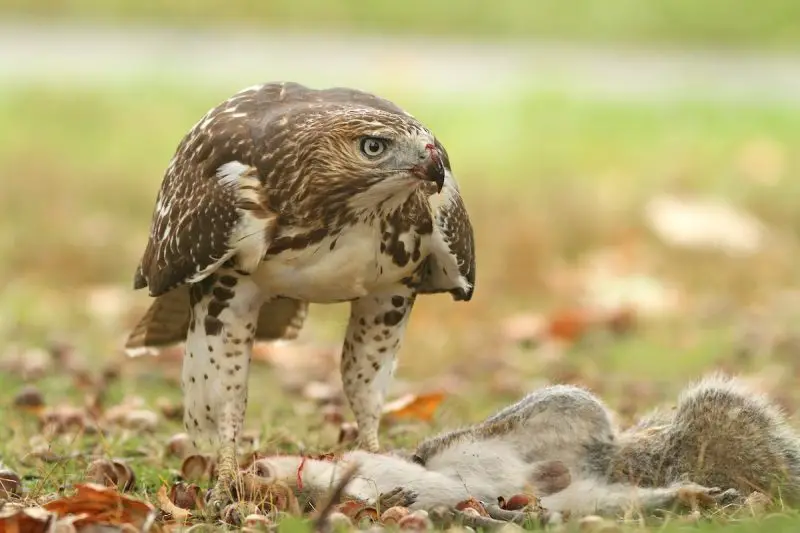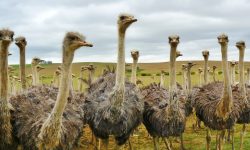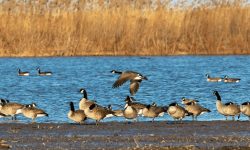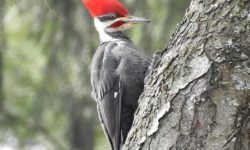Utah, with its diverse landscapes ranging from high mountains to sweeping deserts, offers an incredible habitat for a wide array of bird species, especially raptors. Hawks are among the most fascinating birds of prey you can find here. Their sharp vision, powerful wings, and commanding presence make them favorites among birdwatchers and wildlife enthusiasts.
This guide will help you identify nine stunning species of hawks in Utah, including their characteristics, behavior, and where you’re most likely to spot them.
Why Utah is a Great Place to Spot Hawks
Utah offers a uniquely diverse landscape that makes it an excellent habitat for hawks throughout the year. From rugged mountain ranges and high deserts to fertile valleys and expansive wetlands, the state provides a rich mosaic of ecosystems. This diversity supports different prey populations—rodents, reptiles, and smaller birds—making Utah an attractive hunting ground for both resident and migratory hawks. The varied elevations and open terrain also give hawks the soaring space they need to glide, hunt, and nest successfully.
One of Utah’s greatest advantages for hawk watching is its location along key migratory corridors. Many species of hawks travel through the state during seasonal migrations, especially during spring and fall. Areas like the Goshute Mountains, located near the Utah-Nevada border, are known for impressive raptor migration counts each year. This seasonal movement brings a wider variety of hawks into view, offering birdwatchers the opportunity to see species that may not nest in the region but pass through during migration.
In addition to migratory visitors, Utah is home to several hawk species that remain in the state year-round. The Wasatch Mountains host Red-tailed Hawks and Cooper’s Hawks in forested regions, while Northern Harriers glide low over wetlands and marshes near the Great Salt Lake. The red rock canyons around Moab and Zion National Park also serve as nesting and hunting grounds for species like the Ferruginous Hawk and the Swainson’s Hawk. No matter the season or region, Utah’s diverse geography and rich wildlife make it one of the best states in the U.S. for observing hawks in their natural element.
1. Red-tailed Hawk (Buteo jamaicensis)

Identification and Features
The Red-tailed Hawk is one of the most widespread and easily identified raptors in Utah. Adults typically display a distinctive rusty-red tail, which gives the species its name, though juveniles have a brown, banded tail until they mature. The body is sturdy, with a broad chest, and wings that are wide and slightly rounded. While coloration varies across individuals and subspecies, most Red-tailed Hawks in Utah show a creamy or light underbelly with a dark horizontal belly band and streaked plumage across the chest and shoulders.
Behavior and Diet
This hawk is a powerful and opportunistic predator, known for its impressive aerial skills and patience while hunting. It primarily feeds on small to medium-sized mammals such as mice, voles, squirrels, and jackrabbits, but it won’t hesitate to catch snakes, lizards, or small birds. It often hunts from high perches, scanning the ground below before launching a swift and deadly dive. Red-tailed Hawks also soar in wide circles over open fields, taking advantage of thermals to conserve energy while patrolling for prey.
Habitat and Distribution
Red-tailed Hawks are extremely adaptable and can be found in nearly every type of habitat across Utah. From the arid deserts and sagebrush plains of the southern part of the state to alpine forests in the Wasatch and Uinta Mountains, these raptors have claimed a wide range of territories. They are especially common along highways and rural roads, where they use utility poles and fence posts as hunting perches. As permanent residents of the state, Red-tailed Hawks are active year-round and are often seen even in the heart of winter.
2. Cooper’s Hawk (Accipiter cooperii)

Identification and Features
Cooper’s Hawks are sleek, medium-sized raptors with a body built for speed and agility. They have short, rounded wings and a long, slim tail that features several dark, horizontal bands and a rounded tip. Adult birds show blue-gray plumage on the back and wings, with a finely barred rufous-orange chest and pale underparts. Their piercing red eyes and squared-off head with a slightly hooked beak give them a fierce and alert appearance. Juveniles, by contrast, are brown above with streaky brown markings on the chest and yellow eyes.
Behavior and Diet
This hawk specializes in fast, agile flight through dense vegetation, making it a master of ambush hunting. Cooper’s Hawks prey primarily on medium-sized birds such as doves, starlings, and robins, often surprising them with a rapid chase through trees. They’re also capable of taking small mammals like chipmunks and squirrels. Known for their boldness, these hawks sometimes hunt near bird feeders, where flocks of smaller birds gather, offering a convenient source of prey.
Habitat and Distribution
Cooper’s Hawks are well adapted to wooded habitats and have increasingly made use of human-altered environments. They are commonly found in deciduous forests, suburban backyards, and urban parks—anywhere with tree cover and a steady bird population. In Utah, they are most often spotted in the northern and central parts of the state, including the Wasatch Front and foothill regions. As year-round residents in many areas, they may even nest in residential neighborhoods, often going unnoticed despite their proximity to human activity.
3. Swainson’s Hawk (Buteo swainsoni)
Identification and Features
Swainson’s Hawks are slender raptors with long, pointed wings and a relatively short, squared-off tail. In flight, they often appear slim and streamlined, especially when gliding over open landscapes. Adults are typically marked by a distinctive dark bib on the upper chest, contrasting with their pale underparts. Their backs and upper wings are dark brown, while the face is often lightly streaked. When seen from below, they may appear almost two-toned, with dark wing linings and light flight feathers—a key field mark that helps distinguish them from other buteos.
Behavior and Diet
Unlike many other hawks, Swainson’s Hawks feed heavily on insects, especially during the breeding season. Grasshoppers, crickets, and dragonflies make up a large part of their summer diet. During migration and in preparation for long-distance flights, they shift to eating small mammals like voles and mice. Swainson’s Hawks are highly social compared to other raptors, and during fall migration, they gather in large flocks known as kettles, sometimes numbering in the thousands. These flocks create spectacular aerial displays as they ride thermals southward.
Habitat and Distribution
Swainson’s Hawks favor wide-open habitats such as prairies, rangelands, sagebrush flats, and agricultural fields. In Utah, they are seasonal visitors, arriving in late spring and staying through early fall to breed. They are most commonly seen in the western and southern regions of the state, including the Great Basin desert and open valleys. These hawks build nests in isolated trees or on utility poles in otherwise treeless areas. Because of their preference for open space and their visible hunting flights, they are one of the more easily observed hawks during Utah’s warmer months.
4. Northern Harrier (Circus hudsonius)
Identification and Features
The Northern Harrier is a slim, graceful hawk easily recognized by its long wings, long tail, and distinctive owl-like facial disk, which aids in sound detection. Males are a pale gray above with black wingtips and whitish underparts, often earning them the nickname “gray ghost.” Females and juveniles are brown above and streaked below, providing better camouflage in grassland habitats. One of the most reliable field marks for all sexes and ages is the prominent white patch on the rump, visible in flight as they glide low over open terrain.
Behavior and Diet
Northern Harriers are unique among hawks for their hunting technique. Rather than soaring high or perching to watch for prey, they fly slowly and close to the ground, weaving over marshes, fields, and grasslands. Their facial disk funnels sound to their ears, much like an owl’s, allowing them to hear as well as see potential prey. They feed mostly on small mammals like voles and mice, but will also take small birds, amphibians, and insects when available. Harriers are solitary hunters and often cover large areas as they patrol for food.
Habitat and Distribution
In Utah, Northern Harriers are most frequently seen in open, lowland habitats such as wetlands, agricultural fields, and grassy meadows. They are commonly spotted at birding hotspots like the Bear River Migratory Bird Refuge, Farmington Bay, and along the shores of the Great Salt Lake. While some individuals breed in the northern part of the state, most are seen during migration in spring and fall or overwintering in suitable southern habitats. Their low, buoyant flight and erratic gliding behavior make them easy to spot even from a distance.
5. Ferruginous Hawk (Buteo regalis)
Identification and Features
The Ferruginous Hawk is the largest hawk species in North America and commands attention with its striking appearance and robust build. It has broad, pointed wings, a large head, and a wide gape that resembles that of an eagle. Adults are mostly white underneath with a rusty-brown (ferruginous) coloration on the legs, back, and shoulders. Some individuals also display a rufous “V” pattern on their back when seen from above. There is also a dark morph, which is rarer and features chocolate-brown plumage overall with contrasting flight feathers.
Behavior and Diet
Ferruginous Hawks are formidable hunters that rely heavily on ground-dwelling mammals. Their diet consists mainly of prairie dogs, ground squirrels, jackrabbits, and other small mammals, which they capture in open terrain. They may hunt from a perch, by soaring high above the ground, or even by walking short distances on foot to flush out prey. These hawks are not only powerful but also strategic, often observed hovering briefly over grasslands before diving on unsuspecting targets. They are generally solitary but may be seen in pairs during the breeding season.
Habitat and Distribution
This species favors wide-open spaces and avoids heavily forested or developed areas. In Utah, Ferruginous Hawks are typically found in the western half of the state, where expansive deserts, sagebrush plains, and rangelands dominate the landscape. They breed in remote, sparsely populated regions, nesting on the ground, cliffs, or isolated trees and utility poles. Look for them in areas like the West Desert, the Snake Valley, and around the Great Basin, especially from spring through early fall. Their rarity and majestic appearance make them a sought-after sighting for birders exploring Utah’s wild open spaces.
6. Sharp-shinned Hawk (Accipiter striatus)
Identification and Features
This small hawk resembles a miniature Cooper’s Hawk, with short, rounded wings and a long tail. Adults have slate-gray upperparts and reddish barring below. Juveniles are brown with streaked underparts.
Behavior and Diet
Quick and stealthy, Sharp-shinned Hawks specialize in catching birds mid-flight. They’re often seen darting through wooded backyards or near feeders.
Habitat and Distribution
They breed in Utah’s forested mountain regions and migrate through most parts of the state. Sightings increase during spring and fall migration periods.
7. Rough-legged Hawk (Buteo lagopus)
Identification and Features
Rough-legged Hawks have long wings and feathered legs that extend to the toes. Their plumage varies but generally includes a pale underside with a dark belly band and wrist patches.
Behavior and Diet
They hunt by hovering or perching, feeding primarily on voles and other small mammals. These hawks are known for their graceful flight and patience while hunting.
Habitat and Distribution
This is a winter visitor to Utah, favoring open fields and prairies. They are especially common in northern Utah during colder months.
8. Northern Goshawk (Accipiter atricapillus)
Identification and Features
The Northern Goshawk is a large, powerful Accipiter with a bold white eyebrow stripe and blue-gray plumage. Its tail is long and banded, and its wings are broad and rounded.
Behavior and Diet
Goshawks are stealthy and aggressive hunters that feed on birds, rabbits, and squirrels. They prefer dense forests and may defend their nests fiercely.
Habitat and Distribution
Found in mountainous forests, especially in the Uinta and Wasatch ranges. They are year-round residents but rarely seen due to their secretive nature.
9. Zone-tailed Hawk (Buteo albonotatus)
Identification and Features
Zone-tailed Hawks resemble Turkey Vultures with their dark body and two-toned wings. The key difference is the white band across their black tail.
Behavior and Diet
They soar with a V-shaped wing posture, often mimicking vultures to surprise prey. They hunt reptiles, birds, and small mammals.
Habitat and Distribution
This species is rare but can be seen in southern Utah, especially in canyon areas during the summer months. Look for them in places like Zion National Park.
Best Times of Year to See Hawks in Utah
Spring and fall migration seasons (March-May and September-November) are the best times to spot a wide variety of hawks in Utah. Winter brings in species like Rough-legged Hawks, while summer is ideal for Swainson’s Hawks and Zone-tailed Hawks. Red-tailed Hawks, Cooper’s Hawks, and Northern Goshawks can be seen year-round.
Best Places to Spot Hawks in Utah
Antelope Island State Park
Located in the Great Salt Lake, this park is excellent for spotting Red-tailed Hawks, Northern Harriers, and Ferruginous Hawks. The wide-open terrain is ideal for raptor watching.
Bear River Migratory Bird Refuge
This wetland-rich area in northern Utah attracts Northern Harriers, Rough-legged Hawks, and many others, especially during migration.
Zion and Bryce Canyon National Parks
These southern Utah parks are good for rare sightings of Zone-tailed Hawks and more common species like Red-tailed Hawks.
Wasatch and Uinta Mountains
Forested areas here are strongholds for Northern Goshawks and Sharp-shinned Hawks, especially in the summer.
Fish Springs National Wildlife Refuge
Located in Utah’s west desert, this remote area attracts Swainson’s Hawks and Ferruginous Hawks in summer.
Final Thoughts
Utah offers a remarkable opportunity to observe a diverse array of hawks in their natural habitats. From the mighty Ferruginous Hawk soaring above the plains to the stealthy Northern Goshawk in alpine forests, each species brings its own beauty and excitement. With the right timing and locations, birdwatchers in Utah can enjoy a thrilling raptor experience across all seasons.
Keep your binoculars ready, your camera charged, and your eyes on the sky—the hawks of Utah are waiting to be discovered.






